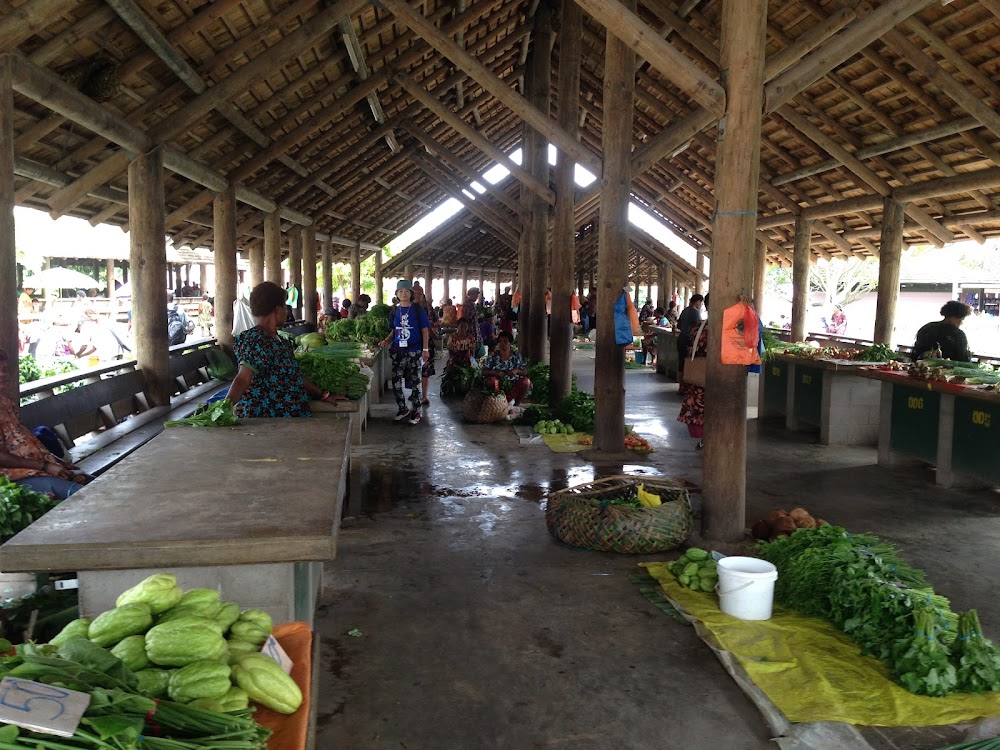Rabaul Market (Market bilong Rabaul)
Overview
Rabaul Market: A Cultural and Economic Hub
Rabaul Market is a vibrant and bustling hub located in the heart of Rabaul, a city in East New Britain, Papua New Guinea. This market has long been an integral part of the community, serving as a focal point for trade, social interaction, and cultural expression. With its lively atmosphere and diverse offerings, Rabaul Market is a must-visit destination for both locals and travelers alike.
Historical Significance
The history of Rabaul Market dates back to the early colonial period when Rabaul emerged as a key administrative and economic center. Initially, it started as a collection of simple stalls where local farmers and fishermen gathered to sell their produce and catches. Over the years, the market grew in size and significance. During the German colonial period, efforts were made to organize and systematize the market, introducing basic infrastructure and regulations to ensure fair trade and hygiene standards.
Resilience and Reconstruction
As the decades passed, Rabaul Market evolved with the changing times. After the devastation of World War II, the market was rebuilt and expanded to accommodate the growing population and increasing demand for goods. Local materials such as woven bamboo mats, timber, and corrugated iron were used to construct the main market building and individual stalls, selected for their availability and durability in the region's tropical climate.
In 1994, Rabaul faced another challenge when catastrophic volcanic eruptions devastated much of the town. However, the resilience of the local population shone through as the market was rebuilt with renewed vigor. The new design prioritized durability and safety, with concrete and steel replacing some of the more vulnerable materials, ensuring better protection against future natural disasters.
A Vibrant Marketplace
Today, Rabaul Market is a lively destination where visitors can find an array of fresh produce, seafood, crafts, and other goods. Vendors bring in fresh fruits and vegetables from the surrounding fertile land, while the nearby coastal waters provide an abundance of fish, crabs, and shellfish. Handwoven baskets, traditional carvings, and colorful bilums (woven bags) showcase the rich cultural heritage of the Tolai people and other ethnic groups in the area.
Layout and Accessibility
The layout of Rabaul Market is designed to facilitate easy movement and access. Stalls are organized into sections based on the type of goods sold, making it convenient for shoppers to find what they need. Wide pathways accommodate the flow of people, and shaded areas offer respite from the tropical heat and occasional rain.
A Community Gathering Place
One of the most remarkable aspects of Rabaul Market is the sense of community it fosters. It is not merely a place for buying and selling goods; it serves as a social space where people gather to exchange news, celebrate cultural events, and support one another. Market days are especially vibrant, drawing in vendors and customers from surrounding villages and towns.
Commitment to Sustainability
Environmental sustainability is becoming increasingly important for Rabaul Market. Efforts are underway to reduce waste and promote recycling. Biodegradable bags are increasingly favored over plastic ones, and designated areas for composting organic waste have been established. These initiatives highlight the market's role in encouraging ecological awareness among its patrons.
A Testament to Resilience
Rabaul Market stands as a testament to the resilience and ingenuity of the people of East New Britain. From its humble beginnings to its current status as a bustling marketplace, it has continuously adapted to meet the needs of the community while preserving its cultural and economic significance. Visitors to Rabaul Market not only experience a rich variety of goods and produce but also gain a deeper appreciation for the local way of life.







